Architect Savio Lobo's title, Bandra By Hand, pays a unique tribute to the suburb. By using line drawings, he defines the area's rich, diverse character, from its Portuguese-styled villas and churches to its schools and other charming sites
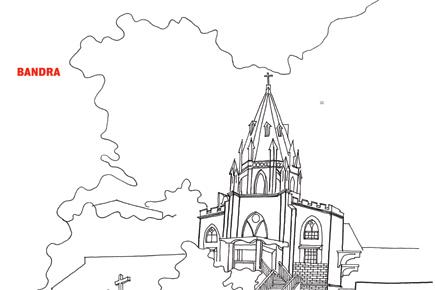
Bandra
“Main line mar raha hoon” would be architect Savio Lobo’s practical reply when puzzled passers-by would ask him, “Kya kar rahe ho?” This, after noticing him positioned outside a Portuguese-styled bungalow or a chapel tucked in a bylane in Bandra, while sketching one of the 100 images meant for his book.
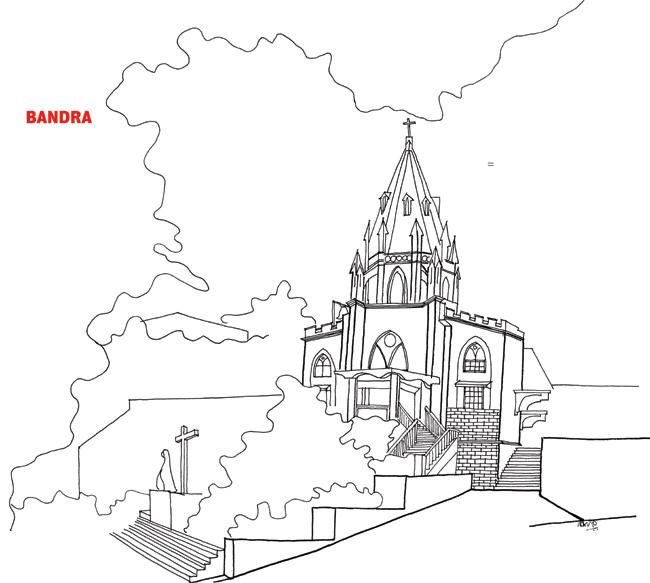
Constructed first in 1858 as a chapel on the hill, St Anne’s Church as it is known today, was rebuilt in 1939. Sketch COURTESY/SAVIO LOBO, ARCHITECT
This was one of the many anecdotes that Lobo regaled audiences with on a rainy Sunday evening at the release of his stylish coffee table book of line drawings, Bandra By Hand: Drawing Attention.
ADVERTISEMENT

Savio Lobo believes that the profession of architecture must be seen as far more than private practice, influencing and caring for all aspects of the environment we live in. PIC/EMMANUAL KARBHARI
The meticulous author combed the neighbourhood for its structures and landmarks, and was able to win over countless people who opened their homes to ensure that this stunning ode was fructified. As he writes in the book, the buildings of Bandra showcase a distinctive architectural character in the form of its internal and external verandahs, staircases, terraces and balconies. The intent has been to draw attention to this fine mix of design through line and word. Excerpts from an interview with the young architect:
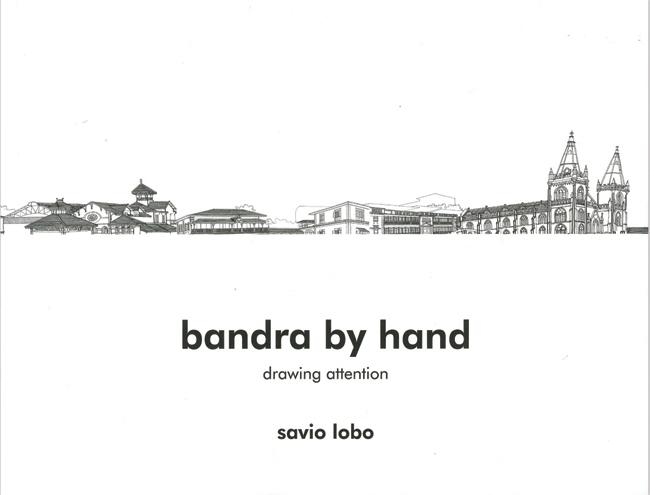
Q. Tell us a bit about your book of line drawings, Bandra By Hand.
A. This book was meant to be a service, in many ways: To highlight and remind others that what we are losing out on is an entire generation of wonderful structures. This process took a little over a year and consists of over 100 sketches. I interviewed over 200 people, and clicked thousands of photographs for my research. I would sketch early each morning, and attend my architectural practice during the remaining part of the day. I would always approach each location with the understanding that I might not be able to return to the site, and hence had to give it my best.
Q. Why did you select Bandra for this unique project?
A. Bandra had its own identity, and had its own municipality even before Independence. It was a charming area, and covered a huge territory at one point. No other area in Mumbai boasts of such diversity.
Q. This project would have involved plenty of challenges by way of securing permissions from owners of homes and private properties. How did you manage it?
A. It all comes down to protocol. It’s important to talk to people before beginning any such venture. People should not get offended; after all, we are invading their privacy and space. The entire process had to be conducted in the most ethical manner possible. It was an uphill task to make them comprehend the vision for this project.
Q. Were you happy with the final product?
A. I was delighted. My wife, Gina — who designed the book — and I had set ourselves a deadline for this title, and we were able to achieve it. By self-publishing it, we had total control over its content, could ensure high quality and follow strict parameters without external interference. Gina played a huge role in the final product. It’s been an equal partnership. This book wouldn’t have been possible without her input.
Q. Darryl D’Monte mentioned in your book’s foreword that you wrote a series on the city called The Far Pavilions in mid-day. Tell our readers about that experience.
A. 25 years back, mid-day had commissioned me to do a series on the lesser-known yet prominent buildings of Mumbai. For a little over a year, on the first Friday of every month, my sketches with accompanying write-ups appeared in the newspaper. These ranged from buildings, like libraries and mansions and covered sites from Colaba to Opera House. These weren’t necessarily protected buildings but important landmarks of the city.
Kekee Manzil: The entrance to this edifice is magnificent, to the accompaniment of balusters that form polygonal balustrades that support stone coping as one ascends the flight of marble steps. This building was designed for the present family’s father; construction began in 1917, and it was completed in 1920.
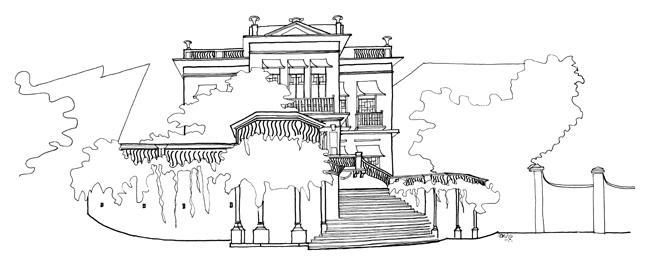
This elaborately designed stone facade, with narrow projecting balconies, adorned with fine wrought iron railings, has braved the elements for almost a century. A labyrinth fret is positioned beneath the cornices at every floor externally. The ground plus two storeyed residence is internally connected by a timber geometrical staircase.
St Stephen's Church: Located almost on top of Mount Mary’s Hill, this church was opened for worship on December 26, 1853, and continues to serve the faithful. Apart from a simple facade, its interior is a delight, consisting of beautiful stained glass windows depicting the martyrdom of St Stephen, finely decorated pews, lectern, altar rail and pulpit.

It has a hammer beam roof supported on timber trusses. The church’s apex is the bell-cot and is located above the main entrance which faces due west.
Charlotte Ville: This residence was built in 1925. It is a ground plus one storeyed structure and is sited in a compound with plenty of greens space.
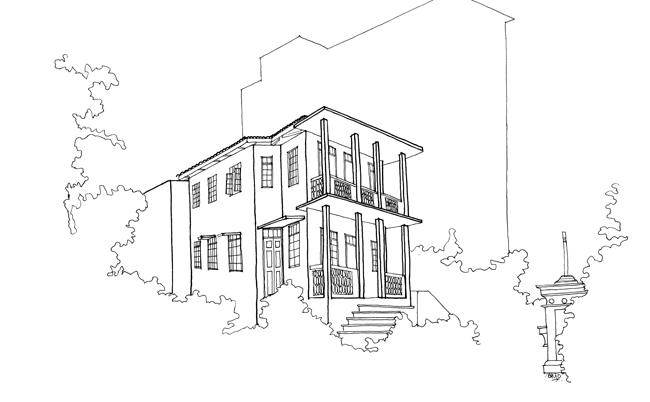
It has an external staircase that allows for independent access to the floor above. The first floor has a pitched roof.
CAPTIONS AND PICS COURTESY/SAVIO LOBO, ARCHITECT
 Subscribe today by clicking the link and stay updated with the latest news!" Click here!
Subscribe today by clicking the link and stay updated with the latest news!" Click here!







